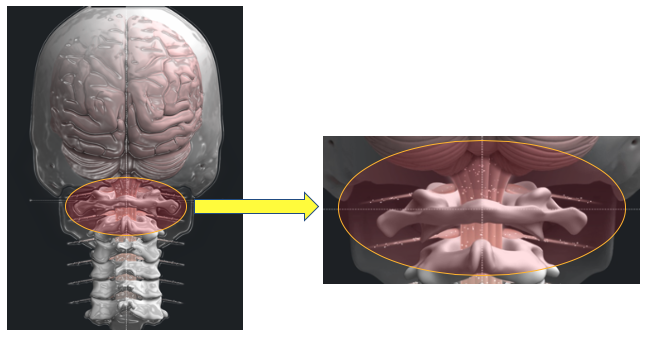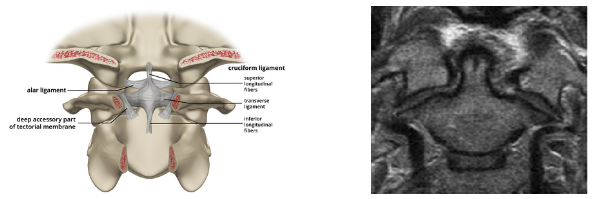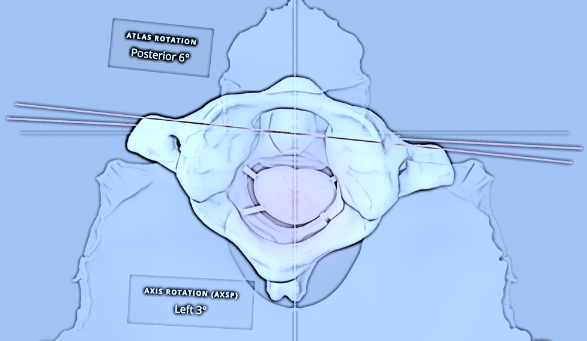For some, headaches and migraines are only a minor annoyance, for others, they can affect every aspect of our lives. When chronic head pain is pervasive, even getting out of bed can be difficult. Focusing at work, or school or relaxing with friends can become a tremendous chore. It can feel like your enjoyment of life is slipping away from you, and it can began to feel hopeless. We may be able to help.
Here’s how we take on this problem: First, we know that we cannot fix every headache. We know this because we have analyzed our own internal outcomes data. While approximately 80% of our patients have significant resolution of their headache and migraine symptoms, reporting sustained improvement after treatment, and 95% report at least some improvement in the severity, duration and frequency of symptoms, 5% experience minimal to no change.
When migraines and headaches are addressed as the problem which surgical and pharmacological solutions, the outcomes are not nearly that optimistic. That is because conditions that cause headaches and migraines are complex, and often multifaceted. That is why it is important when diagnosing complex head pain conditions, and exploration of the underlying cause and contributors is essential.
The human body is very adept at letting us know there is a problem. It communicates with us through symptoms and signs. Understanding how to interpret both symptoms and signs is like decoding a message. When we map out the symptoms of migraines sufferers, we observe that they often fall into recognizable constellations or patterns, and more often than not coexist with other observable signs and symptoms in the adjacent structures of the skull, face, neck and shoulders. Common signs are clenching, tilted shoulders, forward head posture, decreased range of motion in the jaw or neck, and sleep breathing disturbances.
Sometimes the problem or indication of a problem is small at first, like a whisper. For example, research has shown that a loss of the sense of smell can indicate Alzheimer’s as early as 10 years in advance. Chronic headache and migraines are a symptom of an underlying problem, and the pain you feel in your head is a warning signal that something is truly wrong and needs to be fixed. Why would you cover this up a crucial signal with a pain blocker like pain medication when the medication does not fix the problem? One reason, because the symptoms are hard to endure. Medication can be a good-stop gap measure, but they rarely repair, resolve the underlying problem and almost never restore the vitality or a healthy condition.
This is where we can step in. Our LIFT Health Questionnaire can help us begin to sort out complex head pain patterns prior to your complimentary consultation. Whether you have been diagnosed with migraines or chronic headaches, trigeminal neuralgia or any other complex head pain syndrome, our approach to diagnosis is open and truthful, and helps us sort out whether we can help you or not.
Learn more about how we look at your headaches and how we can correct the underlying problem:
If you suffer from headaches, there is a very high probability that your headaches or migraines are coming from chronic irritation of the nerves, muscles or blood
vessels between the head and neck from a complex region known as the Craniocervical Junction.
The Lift Clinic has over a 90% success rate in identifying the causes of daily headaches and migraines and treating them through our proprietary method of treatment. The reason for this unusually high clinical outcomes is due to our selection bias technology. “If you don’t have the problem we fix, we simply don’t accept you as a patient.”
The key to resolving a symptom, such as migraines, is in knowing precisely what is at the root of the problem in the first place. For the problem and solution, we must look at the region known as the craniocervical junction, or the CCJ and how the upper cervical spine and headaches are related. This important region is held in place by ligaments that can be torn, stretched or otherwise damaged as a result of trauma. When normal, neutral alignment of these structures are lost, symptoms can start to set in, immediately, or insidiously—becoming a main cause of daily headaches.
The International Chiropractic Associated (ICA) created a 3 year post-doctorate specialty diplomate program focusing on Chiropractic Craniocervical Junction Procedures (DCCJP). This Diplomate Program was created to train upper-cervical focused chiropractic physicians to more effectively image, diagnose, and non-surgically treat this area. As a CCJ diplomate, and now a clinical instructor for this diplomate program, I have observed that this area is often overlooked by conventional medical treatments or mishandled by some chiropractic physicians and physical therapists who manipulate this area without image-guidance. The fact that this area is more susceptible to injury than any other part of the spine explains why sports injuries and whiplash injuries from car crashes can lie at the root of many migraines and headaches.
When symptoms set in, it is important to rely on someone who specializes in this specific area and who uses the appropriate equipment and diagnostic techniques to understand how to fix this area and fix the causes of headaches and migraines. The Lift Clinic specializes in this region. Through our non-surgical, noninvasive technique, we eliminate the causes of daily headaches, and the result is: the pain goes away—often times, while the patient is still in our office… what’s better, it tends to stay gone! The illustration below shows the location of the craniocervical junction, and highlights the skull base, brainstem, atlas and axis vertebrae and nerves.
 Exploring some interesting facts about migraines, headaches and their origin.
Exploring some interesting facts about migraines, headaches and their origin.
The facts are staggering. Research shows that migraines and headaches affect the lives of 50 million Americans—in fact, according to the World Health Organization, 1 in 20 suffer from a common tension type headache, and migraine headaches are the second most common form of primary headache. In my practice, headaches make up more than ½ of my patient population, and women are affected by migraines or headaches 3 to 1 as compared to men. It’s no wonder so many people are looking to determine the cause of daily headaches with this many people being affected by them!
I have been asked how many migraines per year is considered “normal”, and the answer to that question is “one”. The fact is, head pain is present only when something isn’t right with the head, neck, jaw or face.
Pain, or it’s technical name, “nociception”, is the body’s normal warning indicator that something abnormal or harmful is happening in its’ structures and tissues. In the case of migraines or headaches, those tissue are the head, neck, face or jaw.
Too often, headaches or migraines are treated by medications that block the pain—or as is the case more often, “attempt to block the pain” but fail to do so. In these situations, where drugs are used to mask, mimic or alter brain function, quality of life is often adversely affected by the drugs themselves.
It is common for drugs to stop working, or other harmful side-affects are developed, and then new drugs or other treatments are implemented to deal with the side-affects. I’ve seen lives ruined by this clinical course of action, especially when opiates are involved. Why are people willing to go down this path, if drugs can be so risky and disruptive? The answer is simple: Headaches suck!!
They are simply just horrible—and in severe cases, almost anything (even a
quiet dark room with no light or sound, out of sight and sound of friends,
family or work colleagues) is preferable to the pain of an intense headache.
As a clinician, it is important to understand that there are numerous “types” of
headaches, and many systems involved in the possible generation of the pain
signals which manifest themselves as head, neck or face pain, but for the sake
of this post, I want to talk about headaches and migraines that can be remedied
by our out-patient procedure without drugs or surgery.
In order to begin to understand complexity of the issue and the cause of headaches and migraines, it’s important to know that nerves from the head (cranial nerves) and nerves from the neck (the top six spinal nerves) blend together in a phenomenon known as “convergence”. That means that many headaches, in all their varieties may come from stressed, inflamed or damaged upper cervical spinal structures that are not commonly “well-visualized” (seen) in MRI brain and cervical spine studies. These structures include parts of your head and neck anatomy that you likely have not heard of, and some that you likely have. These are the main pain generators in the head and neck.

- Static Stabilizer Ligaments of the CCJ 2. Special MRI view.
- Dura mater of the posterior cranial fossa
- Inferior surface of the tentorium cerebelli
- Anterior and posterior upper cervical and cervical-occiput muscles
- OCCIPUT-C1, C1-C2, and C2-C3 joints
- C2-C3 intervertebral disc
- Skin of the occiput
- Vertebral arteries
- Carotid arteries
- Alar ligaments
- Tectorial, Atlanto-Axial Membranes
- Transverse ligaments
- Trapezius muscle
- Sternocleidomastoid muscle
When one or several of these structures are torn, stretched, irritated, inflamed, or
otherwise bothered by trauma or malalignment, a pain signal is generated and
sent to the “pain central” region known as the trigeminocervical nucleus.
Because these complex nerve pathways from the upper neck, and cranium “splice” in on one another, and land in the same place in the upper spinal cord, (the
trigeminocervical nucleus) the brain has some difficulty sorting out exactly where
the pain is coming from! However, that doesn’t keep it from sounding an alarm
in the form of a pain signal. What this means to the sufferer of headaches or
migraines is that an unhappy structure in the neck can cause a “headache-like”
pain above or behind the eye, or in the forehead.
…….Or, that
a torn ligament in the neck, (not seen on an MRI) can cause pain in the top of
the head, scalp, temples, teeth or jaw joint.
…….Or,
that an imbalanced bite caused by a slightly high tooth after routine dental
work can feel like a migraine or TMJ pain.
…….Or, that
a crimped or stretched vertebral or carotid artery can cause pain which mimics
sinus pain. You get my point—I could go on and on!
In my practice, it is common to find that headaches and migraines are coming from a twisted atlas-axis-skull base relationship which causes not just one of the above
conditions, but several!

|
Skull Base, Atlas (C1) and Axis (C2) Counter rotated atlas-axis-skull base as seen from the top.
|
For instance, when the atlas (C1) and axis (C2) vertebrae are counter rotated under the skull base (CO), this can:
1.) directly cause irritation to the vertebral arteries,
2.) stretch and irritate the cervical occiput muscles,
3.) pull on frayed or damaged alar ligaments, 4.) irritate upper cervical joint capsules, and
5.) twist the dura matter and cord through the dentate ligaments, and
6.) strain the trapezius and other neck muscles.
This simple (and fixable) condition can cause an “over-loading” of the
circuits in sensory “pain central” in the upper spinal cord. This overloading
summate into a headache or migraine. When the atlas axis and skull base segments are realigned, the pain can resolve naturally!
Migraines may lead a patient to my clinic, but I usually find a host of other conditions and symptoms present in the patients that they or their doctor has not associated with the migraine or headache syndrome, such as:
-
Light-headedness
-
memory problems
-
loss of balance
-
buzzing or ringing in ears
-
balance problems
-
foggy thinking
-
anxiety and/or depression
-
vertigo or dizziness
-
difficulty sleeping
-
sleep apnea
-
clenching or grinding teeth and fatigue—just to name a few!
The good news is that this is usually fixable if you are in the right place—that place is The Lift Clinic.
Call us today to learn more about migraine and headache treatment in Salt Lake City from The Lift Clinic.
